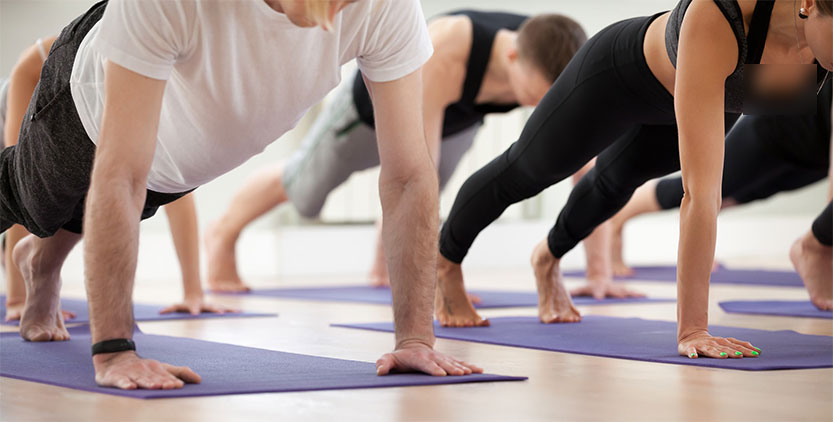
Introduction
What is meant by functional training?
Functional training refers to exercises that are designed to train the body for the activities performed in daily life. Unlike traditional weightlifting, which often targets specific muscles, functional training involves multiple muscle groups and joints, simulating common movements such as lifting, bending, or twisting.
What is the main goal of functional training?
The main goal of functional training is to enhance the ability to perform everyday activities. By focusing on movements that are natural and common in daily life, functional training aims to improve overall strength, flexibility, coordination, and balance. This approach helps in reducing the risk of injuries and improving overall functionality.
What are the basics of functional fitness?
Functional fitness is built on the principle of training the body to handle real-life situations. The basics include:
- Compound Movements: Engaging multiple muscle groups and joints.
- Balance and Coordination: Enhancing stability through exercises that challenge balance.
- Strength and Endurance: Building strength that translates into daily tasks.
- Flexibility: Improving the range of motion to perform activities with ease.
- Adaptability: Adapting exercises to individual needs and abilities.
The Core Concepts of Functional Training
What are the 7 movements of functional training?
The seven fundamental movements of functional training are:
- Pushing: e.g., pushing a door or cart.
- Pulling: e.g., pulling a drawer or heavy object.
- Squatting: e.g., sitting down and standing up.
- Lunging: e.g., stepping forward or to the side.
- Twisting: e.g., turning to reach or look behind.
- Bending: e.g., bending down to pick something up.
- Walking/Gait: e.g., walking, running, or climbing stairs.
What is the most important functional movement?
While all functional movements are essential, the squat is often considered the most important. Squatting is a foundational movement that involves the hips, knees, and ankles. It’s a part of many daily activities like sitting, standing, and lifting.
What are the big 4 skills of functional training?
The big 4 skills in functional training are:
- Strength: Building muscle power.
- Endurance: Enhancing stamina and energy efficiency.
- Mobility: Improving flexibility and range of motion.
- Stability: Increasing balance and control.
What are the 4 pillars of functional training?
The four pillars of functional training are:
- Movement Quality: Focus on proper form and technique.
- Performance: Enhancing physical capabilities.
- Health: Promoting overall well-being and injury prevention.
- Sustainability: Ensuring long-term fitness and wellness.
Comparisons with Other Training Methods
Is functional training the same as HIIT?
Functional training and High-Intensity Interval Training (HIIT) are not the same, although they can overlap. Functional training focuses on movements that mimic daily life activities, while HIIT emphasizes short, intense bursts of exercise followed by rest or low-intensity periods. Functional exercises can be incorporated into a HIIT workout, but they serve different primary purposes.
Is functional training like CrossFit?
Functional training and CrossFit share similarities in that they both emphasize functional movements. However, CrossFit is a branded fitness regimen that includes a specific philosophy and competitive aspect. Functional training is a broader concept that can be applied in various ways, without the competitive elements found in CrossFit.
Is functional training weight lifting?
Functional training may include weight lifting, but it is not limited to it. While weight lifting often targets isolated muscle groups, functional training focuses on movements that engage multiple muscles and joints, reflecting real-life activities. Weights may be used in functional training to add resistance, but the approach is more holistic.
Is functional training better than cardio?
Functional training and cardio serve different fitness goals. Functional training aims to improve overall functionality, strength, and mobility, while cardio focuses on cardiovascular endurance. Both are valuable components of a well-rounded fitness routine, and one is not necessarily better than the other. They complement each other in achieving overall fitness.
Is F45 the same as HIIT?
F45 is a specific fitness program that often incorporates HIIT principles. F45 workouts include high-intensity exercises performed in intervals, but they also combine elements of functional training. While HIIT is a general training method, F45 is a branded program that utilizes HIIT within its unique framework.
Should I do strength training or functional training?
Both strength training and functional training have their benefits, and the choice depends on individual goals. Strength training focuses on building muscle mass and strength, while functional training emphasizes movements that improve daily life functionality. A balanced approach that combines both can provide comprehensive benefits.
Specific Functional Training Programs
What is functional F45 training?
F45 Training is a global fitness community that offers 45-minute functional training workouts. The “F” stands for functional, and the workouts are designed to mimic everyday movement. Combining elements of HIIT, circuit training, and functional movements, F45 aims to provide a dynamic and effective workout experience.
Why is F45 so successful?
F45’s success can be attributed to its unique blend of functional exercises, high-intensity intervals, and community-driven environment. The workouts are constantly varied, keeping participants engaged and challenged. The supportive community and professional guidance from trainers further enhance the appeal of F45.
Why is F45 so effective?
F45 is considered effective due to its combination of functional exercises, intensity, and variation. The workouts target multiple muscle groups, promote fat loss, and improve overall fitness. The structured format and supportive environment encourage participants to push their limits, leading to noticeable results.
Why F45 is better than CrossFit?
Some argue that F45 is better than CrossFit due to its accessibility and lower risk of injury. F45 workouts are designed to be scalable to different fitness levels, whereas CrossFit often involves more complex and heavy lifting. Preferences between the two may vary based on individual goals and fitness levels.
What is harder F45 or CrossFit?
The difficulty between F45 and CrossFit can depend on the individual workout and the participant’s fitness level. CrossFit often involves heavier lifting and more complex movements, which some may find harder. F45 focuses on high-intensity functional exercises, which can also be challenging. Personal preference and goals will influence which is considered “harder.”
Benefits and Importance of Functional Training
What is the benefit of functional fitness training?
Functional fitness training offers numerous benefits, including:
- Improved Daily Functionality: Enhances the ability to perform everyday tasks with ease.
- Injury Prevention: Strengthens muscles and joints, reducing the risk of injuries.
- Increased Strength and Flexibility: Builds overall strength and improves range of motion.
- Better Balance and Coordination: Enhances stability and control in various movements.
- Holistic Approach: Engages multiple muscle groups, promoting overall fitness.
What is functional training and why is it important?
Functional training is a method of exercise that focuses on training the body to handle real-life situations. Its importance lies in its ability to improve daily life functionality, enhance overall fitness, and reduce the risk of injuries. By mimicking everyday movements, functional training provides a practical and efficient approach to fitness.
What is functional training and its benefits?
Functional training emphasizes exercises that translate into daily life activities. Its benefits include:
- Versatility: Suitable for all fitness levels and adaptable to individual needs.
- Efficiency: Targets multiple muscle groups, providing a comprehensive workout.
- Relevance: Focuses on movements that are practical and applicable to daily life.
- Engagement: Offers variety and challenge, keeping workouts interesting and motivating.
Functional Training in Practice
Can you lose weight with functional training?
Yes, functional training can aid in weight loss. By engaging multiple muscle groups and often incorporating high-intensity intervals, functional training can burn calories and promote fat loss. Combined with a healthy diet and consistent routine, functional training can be an effective part of a weight loss strategy.
How many times a week should I do functional training?
The frequency of functional training depends on individual goals, fitness levels, and overall workout routine. Generally, 2-3 times a week can be effective for most people. It allows for recovery and can be combined with other forms of exercise for a well-rounded fitness program.
How do I start functional training?
Starting functional training can be as simple as incorporating functional movements into your routine. Consider the following steps:
- Assess Your Needs: Identify daily activities you want to improve.
- Choose Functional Exercises: Select exercises that mimic those activities.
- Start Slow: Begin with basic movements and gradually increase intensity.
- Consider Professional Guidance: A fitness trainer with experience in functional training can provide personalized guidance. If you’re in Limassol, check out this functional training program.
Is planking functional strength training?
Yes, planking is considered a functional strength training exercise. It engages the core muscles, which are essential for stability and support in many daily activities. Planking helps in building core strength, improving posture, and enhancing overall functionality.
Should you do functional training every day?
Functional training every day is not necessary and may lead to overtraining. Allowing time for recovery is essential for muscle growth and overall wellness. A balanced routine that includes rest days or incorporates other forms of exercise can provide optimal results.
Can you build muscle with a functional trainer?
Yes, functional training can build muscle. By using resistance and engaging multiple muscle groups, functional exercises can promote muscle growth. The key is to include a variety of exercises that challenge the muscles and progressively increase intensity.
Certainly! Here’s the next chunk, covering the section “Other Considerations” and the “Conclusion.”
Other Considerations
Is Pilates a functional training?
Pilates can be considered a form of functional training as it emphasizes core strength, flexibility, and mindful movement, all of which are essential for daily life activities. While Pilates has its unique methodology, it shares the functional training goal of enhancing overall body functionality and alignment. It focuses on controlled movements that can improve posture, balance, and coordination.
Conclusion
Functional training is a versatile and practical approach to fitness that emphasizes movements relevant to daily life. From the core concepts and comparisons with other training methods to specific programs like F45, functional training offers a holistic path to fitness. Its benefits extend to improved functionality, strength, flexibility, and injury prevention. Whether incorporated into a HIIT routine, combined with strength training, or practised through methods like Pilates, functional training adapts to individual needs and goals.
If you’re looking to enhance your daily life performance, reduce the risk of injuries, or simply add variety to your workout routine, functional training may be the answer. With its focus on real-life movements and adaptability, it offers a refreshing and effective approach to fitness. Consider exploring functional training under professional guidance or incorporating functional exercises into your existing routine. Embrace the functionality, and unleash your potential!


